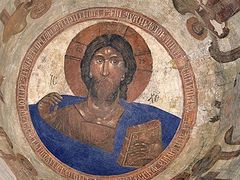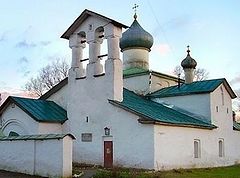Ferapontovo, Russia, April 9, 2019
Preservation work on ancient and unique frescoes in the Cathedral of the Nativity of the Theotokos at the former Nativity of the Theotokos Monastery in Ferapontovo, Vologda Province, has been completed, ensuing that the spiritual treasures will be enjoyed for generations to come.
The frescoes, dating to 1502, are the only ensemble of the great Russian master Dionysius the Wise (c. 1440-1502) that have survived to our day in their original form, according to the site of the Ministry of Culture of the Russian Federation.
The ensemble was recognized as a UNESCO World Heritage Site in 2000. “The complex of Ferapontov Monastery is the purest and most complete example of an Orthodox monastic community from the 15th-17th centuries, a crucial period in the cultural and spiritual development of Russia,” states the UNESCO site.
Initially, a 30-year cycle of emergency conservation was carried out on the frescoes, coming to an end in 2011, though experts then pointed to the need for constant monitoring of the condition of both the paintings themselves and the work already carried out. Thus, preservation work continued in 2012-2018 in the norther, western, southern, and eastern parts of the quadrangle of the cathedral, as well as in the northern altar apse and altar.
In 2018, conservation continued in the central and southern apses.
During the restorative work, specialists managed “not only to create new innovative techniques, but also to implement them in the monument.”
The Cathedral of the Nativity of the Theotokos is the center of the architectural ensemble of the Ferapontov Monastery. It was the first stone building of Belozerye and of the monastery, built, most likely by Rostov masters, in 1490 on the site where the monk Ferapont had consecrated a wooden church in 1408.
For 400 years, the monastery was one of the most important and educational centers of the Russian north and has preserved the unique frescoes of Dionysius and his sons from the early 16th century. As the monastery gradually lost its religious importance, it became a place of exile for high-ranking clerics, including Patriarch Nikon. It was closed by Emperor Paul in 1798, reopened as a convent in 1904, and closed again by the Bolsheviks 20 years later. In 1975, it was turned into a museum and has been part of the Russian North National Park since 1991.
According to UNESCO, the Russian Church does use two churches from the ensemble as parishes.
Dionysius was acknowledged as the head of the Moscow school of iconography at the turn of the 15th-16th centuries. He is also known for a series of icons painted for the Dormition Cathedral in the Moscow Kremlin. St. Joseph of Volokolamsk was among his notable patrons, for whom he painted more than 80 icons.
Follow us on Facebook!





